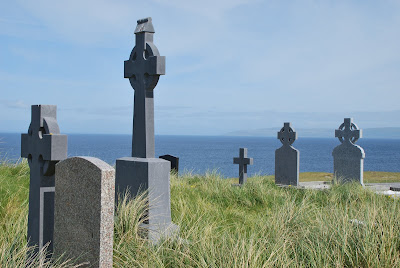
It was as if the tree were crying. Watery beads oozed out of small branches and dropped to the stone wall below. I’d never seen that before and wouldn’t have noticed if it were not back-lit by a setting sun. The prismatic twinkling caught my eye through the window. Drops fell sparkling in the amber light. I thought it was melting ice because it had been a very cold morning, warming up after noon. Then I realized it was a maple tree and those conditions were perfect for running sap. Plumes of wood smoke rose up around town as people boiled it down. Untapped, that old maple surged with too much to hold in. So the teardrops fell, making tiny splashes on the gray stones.
“You don’t have to tell a tree how to be a tree,” someone told me, and thank God for that. It’s difficult enough trying to figure out how to be a man in early 21st century America. At long last, I’m learning its best to leave other living things alone whenever possible and concentrate on myself. Life can freeze a man, but he must thaw when sun shines. Tears can form, and fall, when things surge and pressure builds. As Robert Frost said, “Poems begin as a lump in the throat.” If it can’t escape, that lump will grow and freeze a man hard.
Once allowed to flow, it gets harder for men to hold them back. Not all tears are sad though. They can surge in happiness, as women allow but men resist. Men prefer release in private and that’s all right, as long as they do it. My wife, the therapist, says: “If you can let it flow, you can let it go.”
When my house was finished twenty years ago, I began cutting trees around that maple to see the mountains behind. I split them up and warmed my family with them through several winters. I spared that tree because it’s on the edge of a panorama I was opening, but I cut some of the limbs that intruded, saving one lower limb to look out over. It was that limb upon which the sparkling droplets formed to focus my attention. Soon thereafter, buds emerged. I thought of women giving birth in pain and joy, and with tears accompanying both.
Many kinds of maple trees grow on my lot - reds, whites, swamp maples, sugar maples - and they present different colors come fall. Some, however, have been wounded and go soft inside. Scars and punky wood are obvious sometimes, sometimes not. With other trees, a black stain on the bark indicates a crack beneath. I’m careful dropping wounded trees because I need solid wood in the hinge to guide them when they fall. Some trees show no scarring, but the wood inside has gone soft anyway. My saw feels it first, revving higher and cutting faster, and I realize I won’t get as much good firewood out of that tree. But I work it up anyway.
I’ve wondered why perfect-looking trees rotted inside. Now I consider: Have they hidden their wounds to present a flawless exterior? Has their sap congealed to rot them in their cores instead of nourishing growth in their limbs? Some maples are like this. Some people too.

Another tree nearby tortures itself. It forks twelve feet up and one side sent out a limb that chafes the other. The wounded side grows scar tissue as it rubs painfully during a wind. I hear it groan in a gentle breeze. In a strong gust, it screams. A tree can be its own enemy, as a person can.
Some of my favorite trees are the old, gnarled ones whose scars are open to the world. Some scars are cavernous holes, offering shelter to animals, even children. Old trees live with their wounds over many human lifetimes and send out fresh leaves anyway. They grow bark over and around their scars without hiding them, and the resulting forms charm me. They grow in the open sunlight, and send massive limbs out laterally - unlike trees that grow in dense groves and burn out in competition to shoot upward.

They have strong branches good for swings - not good for lumber and difficult to split into firewood. Maybe that’s why they survive so long. By their very form, they show how to enjoy sun and endure storms. They display endurance. “The artist in me cries out for design,” said Frost, and old, gnarled trees show design by circumstance - what has happened around them and to them - how they’ve withstood it - has shaped them.
A tree doesn’t move. It observes. We stand under it but can’t understand it. Not all of it. Although I have a notion the tree does.





























